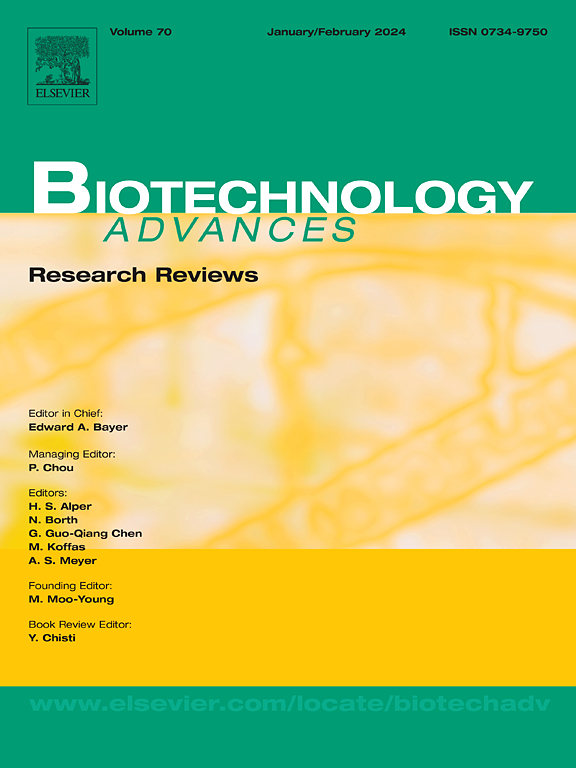Cellular variability as a driver for bioprocess innovation and optimization
IF 12.1
1区 工程技术
Q1 BIOTECHNOLOGY & APPLIED MICROBIOLOGY
引用次数: 0
Abstract
Cellular heterogeneity plays a crucial role in biotechnological processes, significantly influencing metabolic activity, product yield, and process consistency. This review explores the different dimensions of cellular heterogeneity, focusing on its manifestation at both single-cell and population levels. The study examines how factors such as asymmetric cell division, age, and environmental conditions contribute to functional diversity within cell populations, with an emphasis on microorganisms like yeast. Age-related cellular heterogeneity, in particular, is highlighted for its impact on metabolic pathways, mitochondrial function, and secondary metabolite production, which directly affect bioprocess outcomes. Furthermore, the review discusses advanced techniques for detecting and managing heterogeneity, including surface marker-based approaches, which utilize proteins, polysaccharides, and lipids, and label-free methods that leverage cellular volume and physical properties for separation. Understanding and controlling cellular heterogeneity is essential for optimizing industrial bioprocesses, improving yield, and ensuring product quality. The review also underscores the potential of emerging biotechnological tools, such as real-time single-cell analysis and microfluidic devices, in enhancing separation techniques and managing cellular diversity for better process efficiency and robustness.
细胞变异性作为生物过程创新和优化的驱动因素
细胞异质性在生物技术过程中起着至关重要的作用,显著影响代谢活性、产品产量和过程一致性。这篇综述探讨了细胞异质性的不同维度,重点关注其在单细胞和群体水平上的表现。该研究考察了细胞不对称分裂、年龄和环境条件等因素如何影响细胞群内的功能多样性,重点是酵母等微生物。特别是与年龄相关的细胞异质性,其对代谢途径、线粒体功能和次生代谢物产生的影响,直接影响生物过程的结果。此外,本文还讨论了检测和管理异质性的先进技术,包括利用蛋白质、多糖和脂质的基于表面标记的方法,以及利用细胞体积和物理性质进行分离的无标记方法。了解和控制细胞异质性对于优化工业生物工艺、提高产量和确保产品质量至关重要。该综述还强调了新兴生物技术工具的潜力,如实时单细胞分析和微流体装置,在加强分离技术和管理细胞多样性以提高过程效率和稳健性方面。
本文章由计算机程序翻译,如有差异,请以英文原文为准。
求助全文
约1分钟内获得全文
求助全文
来源期刊

Biotechnology advances
工程技术-生物工程与应用微生物
CiteScore
25.50
自引率
2.50%
发文量
167
审稿时长
37 days
期刊介绍:
Biotechnology Advances is a comprehensive review journal that covers all aspects of the multidisciplinary field of biotechnology. The journal focuses on biotechnology principles and their applications in various industries, agriculture, medicine, environmental concerns, and regulatory issues. It publishes authoritative articles that highlight current developments and future trends in the field of biotechnology. The journal invites submissions of manuscripts that are relevant and appropriate. It targets a wide audience, including scientists, engineers, students, instructors, researchers, practitioners, managers, governments, and other stakeholders in the field. Additionally, special issues are published based on selected presentations from recent relevant conferences in collaboration with the organizations hosting those conferences.
 求助内容:
求助内容: 应助结果提醒方式:
应助结果提醒方式:


